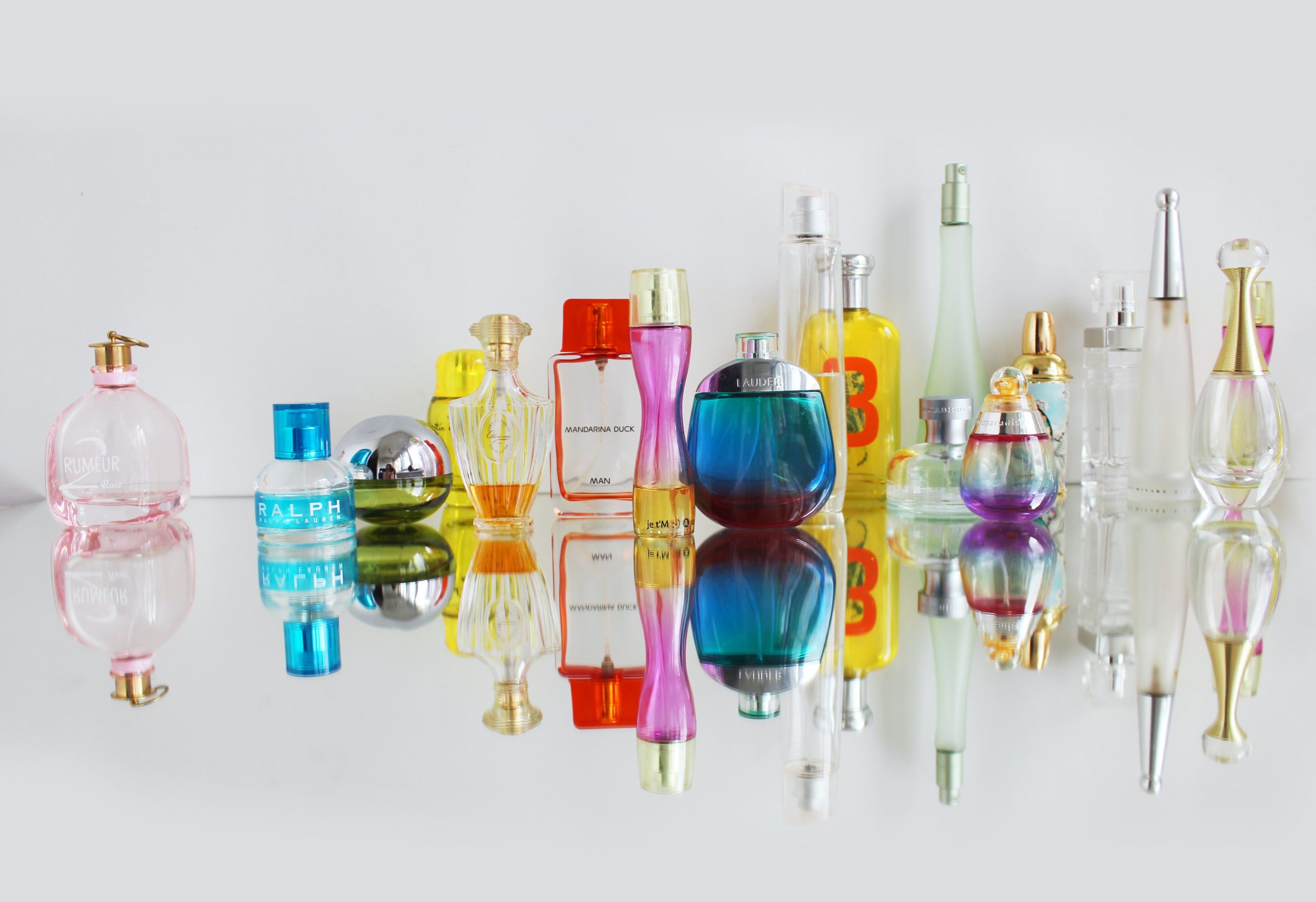*Please note: As of January 12, 2021, I’m no longer supporting Primally Pure due to the company’s partnership with an individual whose content promotes racism, transphobia, homophobia, Covid-denial and anti-masking. Primally Pure has since issued an apology and ended the partnership with this individual. However, this came after the company’s denial of certain responsibilities and continued behaviors by staff that directly contradicted their promised action steps toward change. I love Primally Pure’s products, but I strongly believe that we can make systemic changes by choosing where to spend our money. I’m personally waiting to see whether staff take action toward their promised changes before recommending Primally Pure again. I will update this notification again should the situation change.
As a society, we’ve become conditioned to certain smells. From soaps to colognes to scented candles and detergents, many of us search for scents that smell “good” or “manly” or “pretty.” Yet, most fragrances come with a plethora of health risks, and we need more people talking about it.
Fragrance, or “parfum,” as it’s often called on labels, may be appealing to those seeking scented products. But, in reality, these words translate to mean “hidden chemicals” [2] – many of which include a recipe of hundreds of toxins and irritants. These chemicals are often so potent they can incorporate into porous materials like drywall and upholstered furniture, dramatically affecting the air quality of our homes. Imagine, then, what they’re also doing to our bodies.
No regulations. Companies that manufacture personal care products are required by law to list the ingredients they use. However, fragrances and trade-secret formulas are exempt from this. In fact, the term “fragrance” is completely unregulated by the FDA. The agency uses it as a catch-all term, and as a result, U.S. law does not require companies to be transparent with consumers, manufacturers, or even the FDA itself about the specific ingredients (which can include harmful chemicals) that are actually included under the term “fragrance” or “parfum” on labels.
This means that products can stay on the market without a report to the FDA regardless of whether they cause bad reactions. It also includes items like diaper lotions and other products that may trigger harmful reactions in children. Yikes.
Phthalates + other nasty chemicals. Nearly three-quarters of products with “fragrance” contain phthalates – which are basically chemicals that help scents last longer. This is great concept for days when we want to skip showers and mask our body odor in pretty smelling lotions and sprays. However, phthalates come with a dangerous tradeoff as they’ve been linked to health concerns including hormone changes, lower sperm count, less mobile sperm, birth defects in the male reproductive system, obesity, diabetes and thyroid irregularities [3].
Other common ingredients found in fragrance include acetone, ethanol, benzaldehyde, formaldehyde, limonene, methylene chloride, camphor, ethyl acetate, linalool, and benzyl alcohol – all which have also been linked to negative health effects. Let’s be real, most of us are not going to remember the names of all these chemicals. So, as a general rule, if you can’t pronounce it, stay away from it.
Fragrance formulas are considered to be among the top five known allergens. They are also shown to be asthmagens (ie. substances that trigger asthma), carcinogens, endocrine disruptors (that cause hormone disruption), neurotoxins (that affect the brain, mood, and behavior), and obesogens, which are chemicals that increase obesity and trigger metabolic disorders like diabetes.
Read labels. The word “fragrance” on labels is not one ingredient, but rather a term to describe a combination of what’s typically hundreds of undisclosed ingredients. This puts the responsibility back onto us as consumers to know what to look for when reading labels. One strategy is to choose fragrance-free products. Just make sure the label actually says “fragrance-free” and not another sneaky version of this. The term “unscented”, for example, isn’t necessarily safe and may mean the manufacturer has added another harmful chemical to mask the original odor [1] [2]. Check ingredient labels carefully, or search the Environmental Working Group’s Skin Deep to find products with transparency in their labels. I also use the EWG’s Healthy Living app to search the toxicity level in products on the fly.
Common products containing “fragrance.” As you start to look for “fragrance” and “parfum” on labels, you’ll likely find it on a long list of products you interact with on a daily basis. Common products to watch for include:
- conventional cleaning products (dish soap, floor cleaners, kitchen cleaners, dishwasher detergents)
- personal care products (hair spray, lotions, body wash, shampoo, hand soap, body soap, bath salts, deodorant)
- cosmetics
- perfume and cologne
- diaper creams
- scented candles
- air fresheners
- laundry detergents
- dryer sheets
“Natural” doesn’t always mean natural. Don’t be fooled. Even the term “natural” is unregulated in the U.S. In fact, a 2008 study by the Organic Consumers Association tested multiple popular shampoos, body washes, lotions and other personal care and household cleaning products, all which contained the word “natural” on their labels. The study revealed the presence of a carcinogenic contaminant in many of the tested products, leading the Attorney General of California to file a major lawsuit against these same body care and household-cleaning product companies [5]. In 2016, the Federal Trade Commission filed complaints against four companies that marketed their personal care products as “all natural” or “100% natural” when the products contained a number of synthetic ingredients, metals, and some essential oils with potent sensitizing allergens [4].
Bottom line, the FDA has basically no power to protect Americans from the dangers of fragrances in personal care and home products. Some bigger brands are starting to take action toward going fragrance-free, but more work needs to be done. By making your own changes at home and saying goodbye to products with nontransparent fragrance, you’ll be keeping you and your family healthier.
Clean swaps. Throughout my healing journey of managing autoimmunity and other co-infections, I’ve made many changes to my home and personal care items in order to protect myself, family and pets from the lack of regulation in the beauty industry. I’ve spent years researching and trying various products. This process has made me even more grateful to companies like Beautycounter and Branch Basics – who I’m proud to work with and advocate for based on their transparency, advocacy efforts and progressive mission to use transparent fragrances and other safer ingredients in their products.
Beautycounter, for example, has promised never to use synthetic chemical fragrances, which is one more reason I feel safe using the company’s skincare and makeup products. Here are the products I’ve either tossed or swapped in my own home (with links to products I currently use).
Dental care
- toothpaste –> Primal Life Organics tooth powder (takes some getting used to, but completely changed my oral health)
Household products
- candles –> change to 100% beeswax candles. I like Bluecorn, or you can check the Candles section of my shop.
- cleaning supplies –> Branch Basics for all-purpose, bathroom and window cleaners
- dryer sheets –> eliminated (These are so toxic and full of fragrance. Buh bye).
- dryer balls –> Branch Basics or Molly Suds
- hand soap –> use the same Branch Basics concentrate to make a foamy hand soap (add essential oils for scented) or Beautycounter’s Hand Wash in Citrus Mimosa (this one also has the option of a soap + hand cream set)
- laundry detergent –> I’m partial to Branch Basics, but Molly Suds is also clean and effective.
Makeup
- chapstick –> love me some Primally Pure lip balm
- makeup –> Beautycounter all the way. Feel free to contact me for questions on what would work best with your skin type.
Skincare & personal products
- body lotion –> Countermatch Adaptive Body Moisturizer is my fave, although Hydrating Body Lotion in Citrus Mimosa is also amazing.
- body scrub –> Beautycounter’s Sugar Body Scrub in lemongrass
- body wash –> safe bar soaps (buy local or search here), or Beautycounter’s Body Wash in Citrus Mimosa
- deodorant –> Primally Pure or Beautycounter’s Clean Deo line.
- hand sanitizer –> Luminance Skincare
- shampoo + conditioner –> Beautycounter’s daily shampoo and conditioner
- skincare –> Beautycounter all the way. Feel free to contact me for questions on what would work best with your skin type.
- sunscreens –> any of Beautycounter’s Countersun line. Read more about the the importance of using clean sunscreens here.
While it’s impossible to live in today’s society without exposing ourselves to toxic ingredients, we can take steps to control what we put on our bodies and bring into our homes. It has taken me several years to fully switch to safer products, but little by little our home has become safer and my family has become healthier by going fragrance-free and significantly reducing our exposure to harmful chemicals.
[1] Healthy Child Healthy World (2014). What you need to know about fragrance—A trade secret with not-so-secret health implications. Available online: http://www.healthychild.org/what-you-need-to-know-about-fragrance-a-trade-secret-with-not-so-secret-health-implications/
[2] EWG (2007). What is fragrance? Available online: http://www.ewg.org/enviroblog/2007/12/ask-ewg-what-fragrance
[3] EWG (2013). 12 Hormone-Altering Chemicals and How to Avoid Them. Available online: https://www.ewg.org/research/dirty-dozen-list-endocrine-disruptors?gclid=Cj0KCQiA-rj9BRCAARIsANB_4AAVmF9-Mpe3ik0kKufkw3yggGoyIymDIZL0CuWrnM9VHobJibOPn3caAu_WEALw_wcB
[4] Federal Trade Commission (2016). Four Companies Agree to Stop Falsely Promoting Their Personal-Care Products as “All Natural” or “100% Natural”; Fifth is Charged in Commission Complaint. Available online: https://www.ftc.gov/news-events/press-releases/2016/04/four-companies-agree-stop-falsely-promoting-their-personal-care
[5] Organic Consumers Association (2008). March: OCA Study: Cancer-Causing Ingredient Found in Leading “Organic” and “Natural” Personal Care Products. Available online: http://www.organicconsumers.org/newsletter/organic-bytes-156-looking-back-over-2008-common-victories-common-challenges/march-oca



1 Comment
[…] of gut healing and hormone balancing, I started to pay close attention to every product, food and fragrance that came in contact with my body. Through that process, I was shocked to discover that the U.S. […]